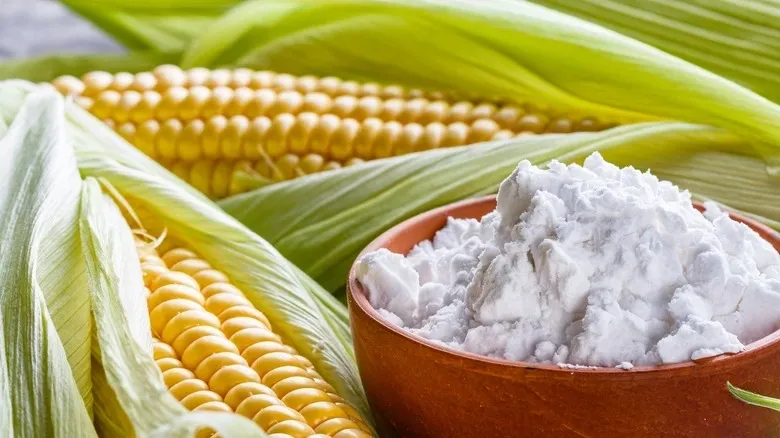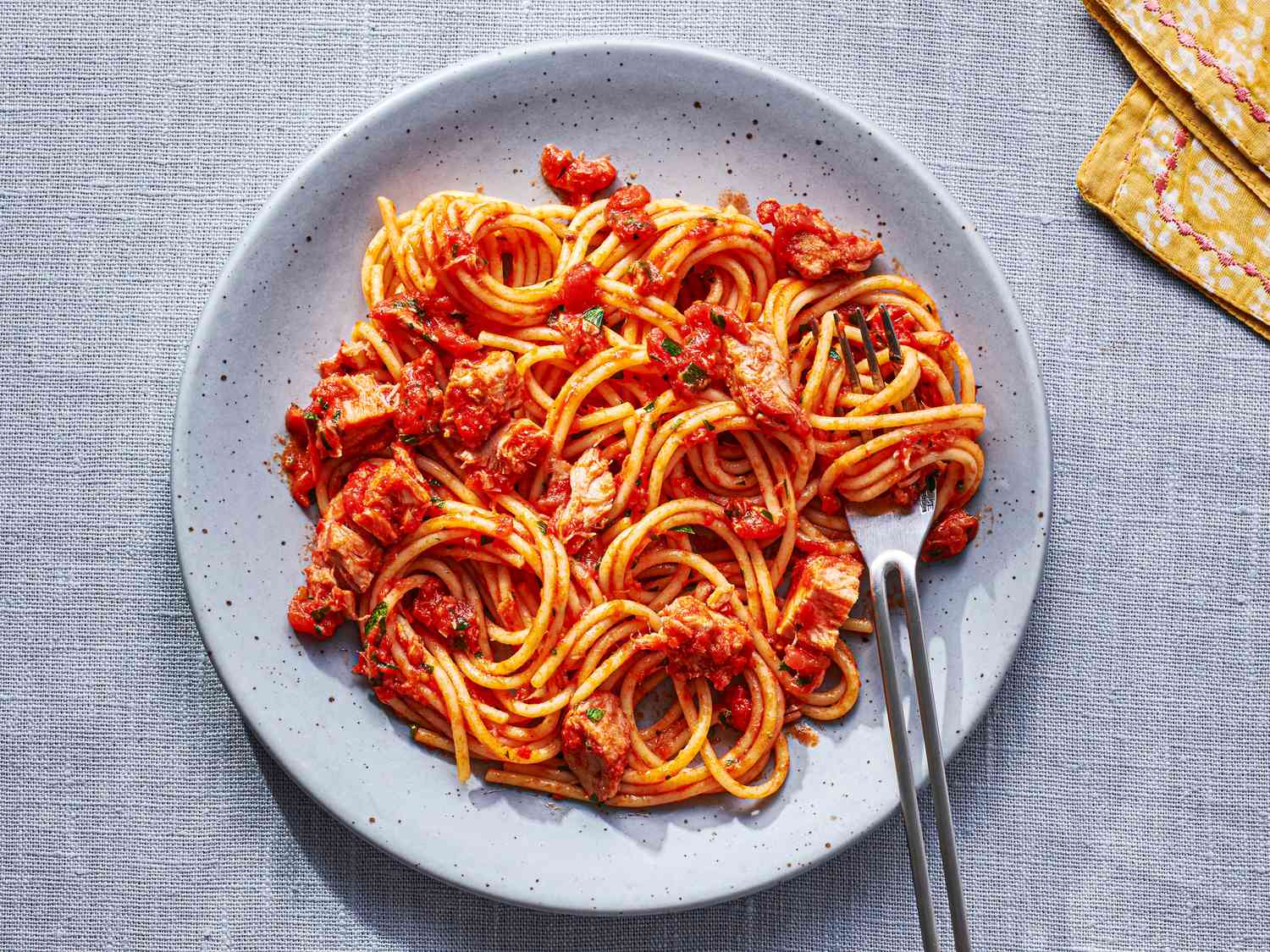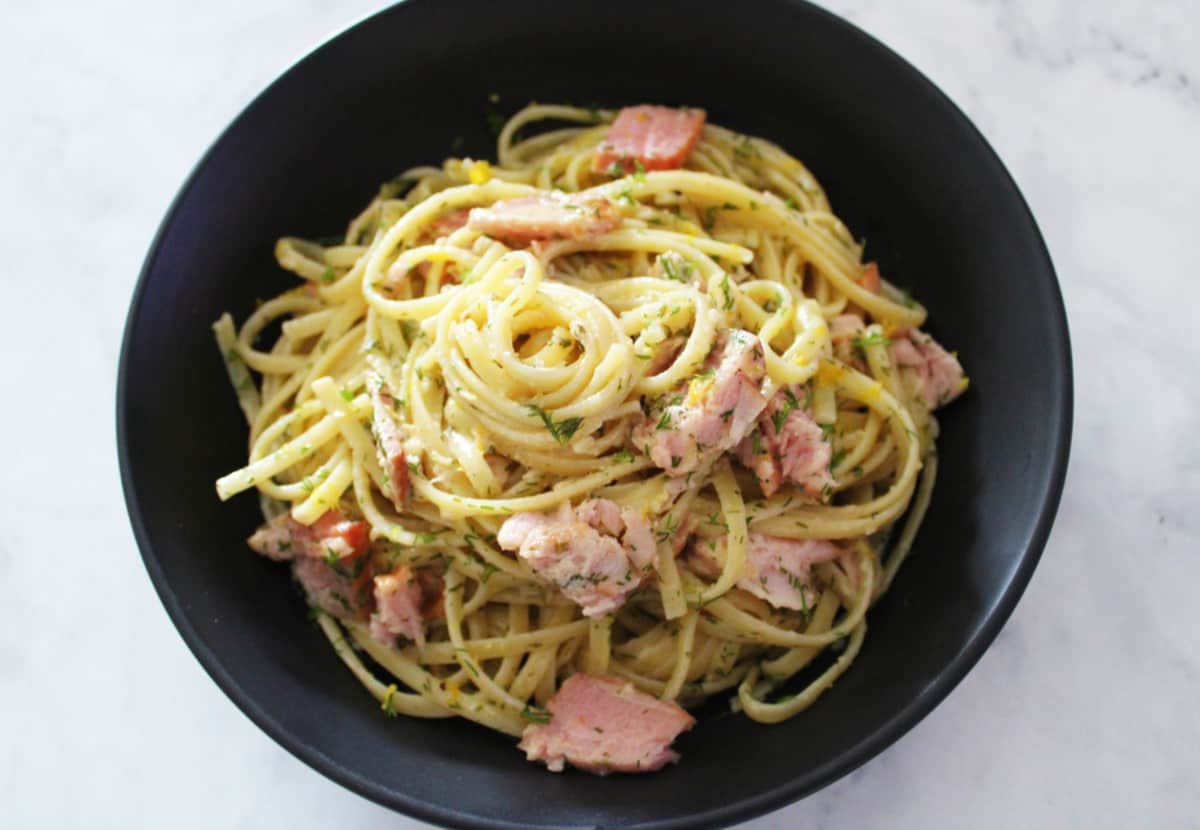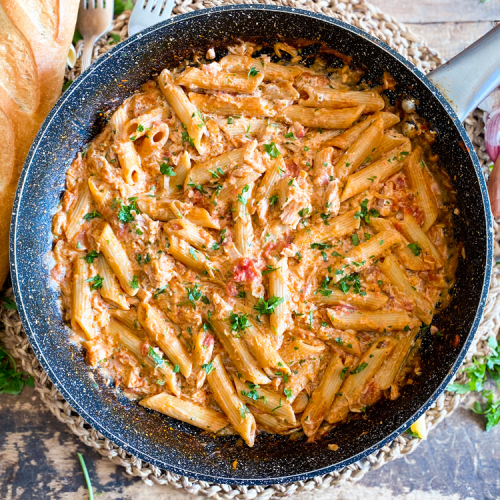Cornstarch and corn flour, despite similar names, serve different purposes in cooking. Cornstarch is a fine, silky powder extracted from the endosperm of corn kernels. It’s primarily used as a thickening agent in recipes, creating a smooth, glossy texture in gravies, sauces, and soups. On the other hand, corn flour is made from the entire kernel and contains more protein and nutrients. It is coarser in texture and often used in baking to provide structure and tenderness in products like bread and muffins.
What Is Cornstarch?
Cornstarch is a fine, powdery substance derived from the endosperm of corn kernels. It is used primarily as a thickening agent in cooking. Its fine texture and neutral flavor make it an ideal choice for thickening gravies, soups, sauces, and various dishes.
When heated in a liquid, cornstarch absorbs moisture and swells, creating a smooth, glossy consistency, making it a versatile ingredient in both sweet and savory recipes. Due to its ability to produce a clear, translucent texture, it’s commonly used to thicken fruit fillings in pies and as a coating for frying foods, resulting in a crispy outer layer.
What Is Corn Flour?
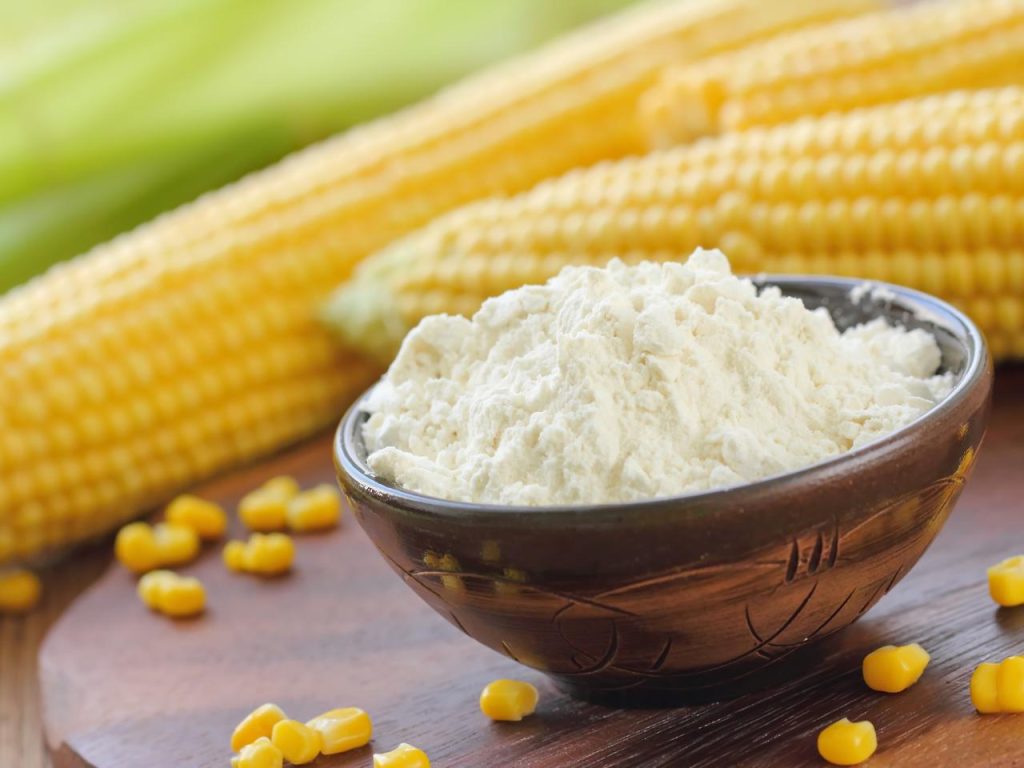
Corn flour is a type of flour made from ground corn, specifically from the entire kernel, including the bran, germ, and endosperm. It has a coarser texture compared to cornstarch and is often used in baking to provide structure and tenderness to various products.
Corn flour is particularly suitable for making bread, muffins, and cornbread, where it imparts a distinct corn flavor and contributes to the overall texture. It’s also a staple in some regional cuisines, such as Mexican cooking, where it’s used for making tortillas and tamales. Unlike cornstarch, which is primarily a thickening agent, corn flour serves as a key ingredient in recipes, particularly in baked goods and certain savory dishes.
When Should You Use Cornstarch, And When Is Corn Flour The Better Choice?
Find out when it’s best to use cornstarch and when you should go with corn flour in your cooking.
Use Cornstarch
Thickening Sauces and Gravies: Cornstarch is an excellent choice when you need to thicken sauces, gravies, and soups. Its fine texture allows it to dissolve easily and create a smooth, lump-free consistency. It’s ideal for dishes where a clear, glossy finish is desired, such as in Chinese stir-fries and sweet and sour dishes.
Fruit Pie Fillings: In fruit pie recipes, cornstarch is commonly used to thicken the fruit filling. It maintains the clarity and natural color of the fruit, ensuring that the pie filling is not too runny.
Asian Stir-Fries: In Asian cuisine, cornstarch plays a significant role in creating a velvety texture on meat and vegetables in stir-fry dishes. Coating the ingredients with cornstarch before stir-frying helps create a light and crispy exterior, which contrasts well with the savory sauces.
Use Corn Flour
Baking: Corn flour is an excellent choice for baking, particularly in recipes where you want to achieve specific qualities. Its coarser texture contributes to the structure and texture of baked goods. For instance, it’s a key ingredient in cornbread recipes, where it imparts a distinct corn flavor and a hearty texture.
Cornbread, Tortillas, and Tamales: In certain regional cuisines, corn flour is a staple for making items like cornbread, tortillas, and tamales. It plays a crucial role in defining the texture and flavor of these dishes, giving them their unique characteristics.
Recipes Requiring a Corn Flavor: When you want to infuse your dish with a strong corn flavor, corn flour is the preferred option. Its pronounced corn taste makes it an essential ingredient in recipes where that flavor is central, such as in corn pancakes or Mexican tamales.
Can I use corn flour instead of cornstarch for frying?
Yes, you can use corn flour instead of cornstarch for frying. But there are some important considerations
Texture
Corn flour has a coarser texture compared to cornstarch. When used for frying, it can create a thicker and more textured coating on the food. This may result in a different mouthfeel and appearance for the fried items.
Taste
Corn flour has a more distinct corn flavor, which can be a positive or negative, depending on your preferences and the specific dish. Cornstarch is neutral in taste and doesn’t impact the flavor of the fried food.
Crispiness
Cornstarch is often preferred for frying because it can produce a lighter, crispier texture due to its fine texture and ability to form a thinner, smoother coating.
Absorption
Cornstarch has a higher starch content than corn flour. For example, cornstarch contains approximately 91% to 95% starch content, whereas corn flour typically has a starch content ranging from about 75% to 85%. It means it can absorb less oil during frying, resulting in less greasy food.
What Can I Use Instead Of Cornstarch?
If you need a substitute for cornstarch, there are several alternatives depending on the specific purpose in your recipe
All-Purpose Flour: All-purpose flour can be used as a thickening agent in a similar way to cornstarch. Mix it with cold water to create a smooth paste, and then add it to your sauce or soup for thickening.
Arrowroot Powder: Arrowroot is a natural thickener with a neutral taste. It works well in sauces, gravies, and pie fillings. Use it in a 1:1 ratio as a substitute for cornstarch.
Potato Starch: Potato starch is another effective thickener. It’s suitable for gravies and soups and can be used in a 1:1 ratio in place of cornstarch.
Tapioca Starch/Flour: Tapioca starch or flour is often used in gluten-free recipes. It works as a thickening agent in a 1:1 ratio, similar to cornstarch.
Rice Flour: Rice flour can be used as a thickener in a pinch. It might have a slightly different texture but is a reasonable substitute for cornstarch.
Instant Mashed Potatoes: In some cases, instant mashed potatoes can be used as a thickener. They work well in soups and sauces.
What Are The Recommended Storage Methods And Shelf Life Of Cornstarch And Corn Flour?
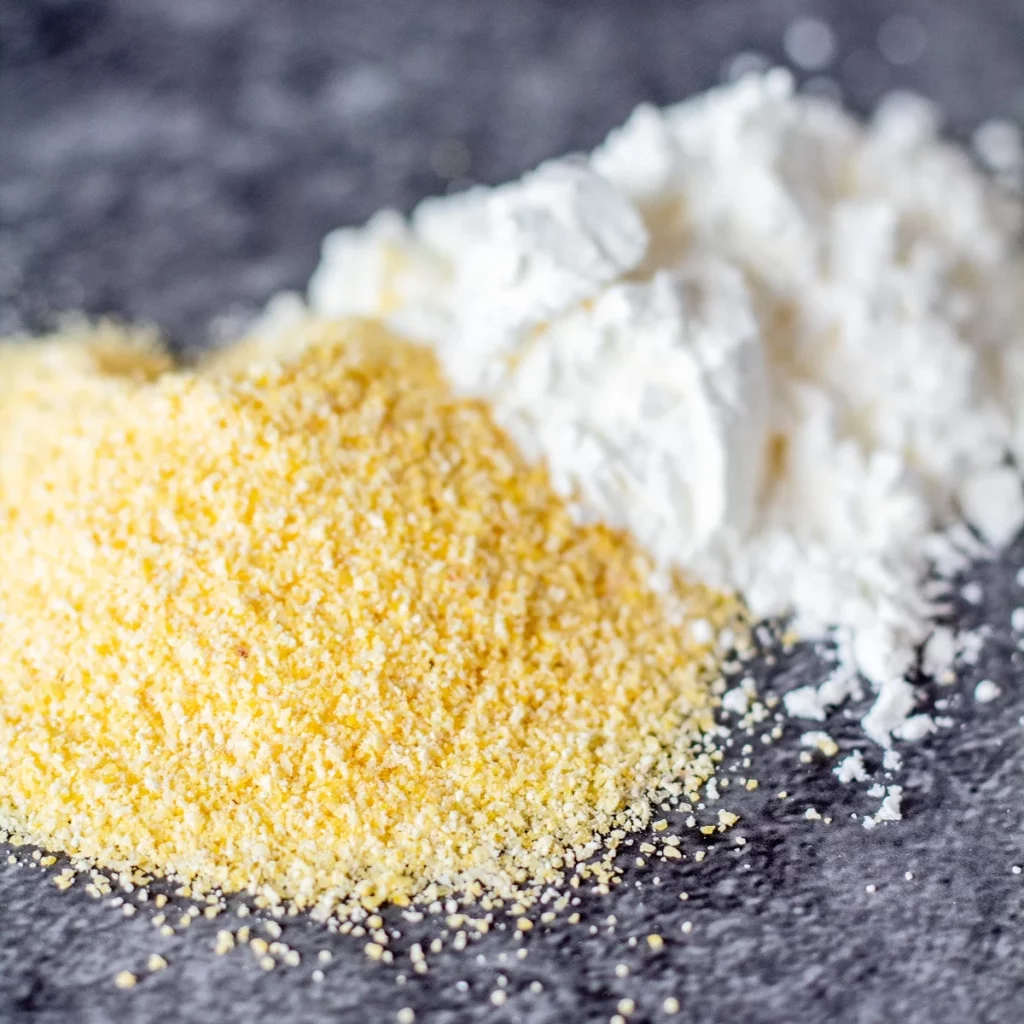
The recommended storage methods and shelf life of cornstarch and corn flour are as follows
Storage Methods
Cornstarch: Store it in a cool, dry place in an airtight container to prevent moisture absorption and clumping. Keep it away from extreme temperature fluctuations and humidity.
Corn Flour: Similar to cornstarch, store corn flour in a cool, dry place in an airtight container. Ensure it’s protected from moisture and temperature variations.
Shelf Life
Cornstarch: When stored correctly, cornstarch can have a long shelf life of 2-3 years or even more. It doesn’t spoil but may lose its thickening power over time.
Corn Flour: Corn flour also has a relatively long shelf life of 1-2 years or more when stored properly. It’s essential to check for any signs of spoilage, such as an off odor or changes in color or texture.
FAQ
Which is better cornstarch or flour?
The choice between cornstarch and flour depends on your specific culinary needs. Cornstarch is preferable for tasks like thickening sauces due to its ability to create a clear, glossy finish. Flour, on the other hand, is versatile and used in baking to provide structure and texture.
Why use cornstarch instead of flour?
Cornstarch is chosen over flour when a clear and glossy texture is desired in recipes. It’s an excellent thickening agent for gravies, sauces, and soups, offering a smoother consistency.
Can you fry with cornstarch?
Yes, you can use cornstarch for frying. It’s a common choice for creating a crispy coating on fried foods. However, it results in a lighter and crispier texture compared to flour.
Does corn starch make things crispy?
Yes, cornstarch is known for its ability to make fried foods crispy. It creates a light and crispy texture when used as a coating for frying.
Is cornstarch safe on skin?
Cornstarch is generally safe to use on the skin and is often found in cosmetic and skincare products. It can help absorb excess moisture and soothe irritation.
Does cornstarch expire?
Cornstarch has a long shelf life when stored properly. While it doesn’t spoil, its thickening power can diminish over time. Store it in a cool, dry place in an airtight container.
Can you eat cornstarch?
Yes, you can. Cornstarch is safe to eat when used as an ingredient in recipes. However, consuming it in large quantities without mixing it into other ingredients may not be pleasant due to its texture.
Is corn flour good for health?
Corn flour is nutritious, containing fiber, vitamins, and minerals. It can be part of a balanced diet, but its health benefits depend on how it’s used in recipes and dietary preference
Final words
In conclusion, understanding the difference between cornstarch and corn flour can greatly enhance your cooking. These two ingredients have unique qualities and serve specific purposes in various recipes. Whether you’re thickening a sauce with cornstarch for a glossy finish or baking cornbread with corn flour for a hearty texture, knowing when to use each can make a delicious difference in your culinary creations. So, the next time you’re in the kitchen, choose wisely between cornstarch and corn flour to make your dishes truly special. Happy cooking!





